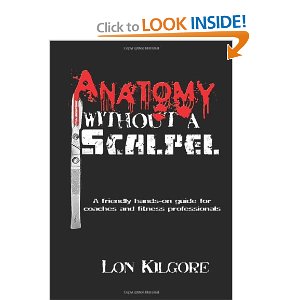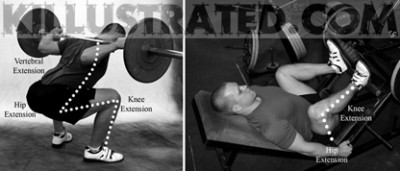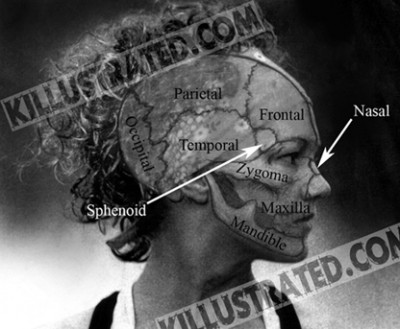Dr. Lon Kilgore is a patient, intelligent, and innovative man who continuously campaigns against conventional fitness wisdom and has mentored plenty of lifters, graduate students, and schmucks like me. He is releasing a fantastic — and incredibly practical — anatomy book entitled, Anatomy Without A Scalpel. This book is not only well put together with unique photos and drawings (Lon is an excellent artist on top of having a doctorate in anatomy and physiology), but it also features me as one of the models (no speedo, sorry). Dr. Michael Hartman was a graduate student of Dr. Kilgore and interviewed him about this textbook. Here are Dr. Hartman’s Blog and Dr. Kilgore’s store, book, blog, and site. I highly recommend the anatomy book and hope you enjoy the interview. If you have any questions, you may leave them in the comments (I can get a response from Dr. Hartman or Dr. Kilgore if they are good questions).
The following is quoted from part I and part II of Dr. Hartman’s blog that hosts this interview in its original form. These are just highlights and the full interview can be found in part 1 and part 2.

On how this book can help a trainer or coach:
A trainer should be able to use the information presented to produce a better and more efficient training plan for their charges. You would not ask a mechanic to supercharge your engine if you knew they did not know how your engine was built, how it turned the wheels, or what tools they needed. A trainee is paying the trainer to “supercharge” them and it is incumbent on the trainer to know the nuts and bolts of both the trainee’s body and the tools (exercises) they use.
A trainer should also end up being better able to identify which muscle or anatomical feature is presenting pain or soreness during or after training. If you don’t know anatomy, you can only guess at the site of the problem or hope that you can create a solution that works. Anatomical knowledge takes out guesswork and prompts correct solutions.
On how this book helps a trainee:
A trainee that trains himself would reap the same benefits as a trainer. Their exercise selection, programming, and assessment of problems will improve. For a trainee who is paying a professional trainer, it can serve as a means of assessing whether the trainer is providing your money’s worth.

On the content of the book:
The book is 324 pages – 310 pages of chapter content. I believe there are about 525 individual photographs and illustrations. About 1/3 pencil illustrations and about 2/3 photographs.
One (very good) reason why this book is different:
The other difference is in the level of explanation. The most popular exercise anatomy book in print has about 400 illustrations on less than 150 pages. Its just images with bullets and blurbs of text – very pretty images though. I’ve added a great deal of explanation on how to find the various anatomical structures along with information on why they are important and how they function in the real world.
Dr. Kilgore — Anatomy Without A Scalpel
10

